(© Quentin Derouet)
WALK, a tour devoted to contemporary photography, displays works in unusual locations in Ixelles/Elsene. AGENDA sat down for coffee with the driving forces behind the photography tour Aurore Dal Mas, Sébastien Marcq, and their guest of honour Hugues De Wurstemberger. “Organising a festival yourself creates freedom, we do what we want!”
Take a WALK on the wild side
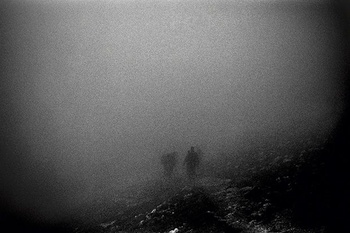
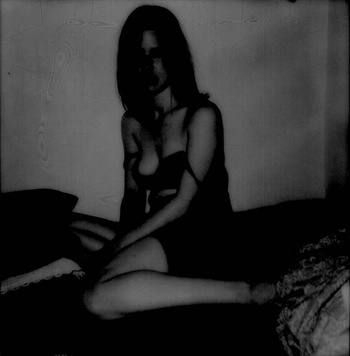
(© Aurore Dal Mas)
Aurore Dal Mas sticks to tea because coffee only makes her stressed. It would be almost impossible for her not to be quaking with nerves right now. Just before the beginning of the festival, their account is still in the red. The pair are now appealing to crowd-funding to try and break even [which on 9 October, they did - HR]. Dal Mas and Sébastien Marcq are organising the WALK festival for the second consecutive year. As young photographers, where did they get the idea of launching such an ambitious project? Some blue Monday, the two of them must have said to each other that there isn’t much for a photographer to do in their hometown of Ixelles/Elsene. They can’t get into the galleries there and they don’t take photos for the papers. So there’s only one thing to do: organise it yourself.
Aurore Dal Mas sticks to tea because coffee only makes her stressed. It would be almost impossible for her not to be quaking with nerves right now. Just before the beginning of the festival, their account is still in the red. The pair are now appealing to crowd-funding to try and break even [which on 9 October, they did - HR]. Dal Mas and Sébastien Marcq are organising the WALK festival for the second consecutive year. As young photographers, where did they get the idea of launching such an ambitious project? Some blue Monday, the two of them must have said to each other that there isn’t much for a photographer to do in their hometown of Ixelles/Elsene. They can’t get into the galleries there and they don’t take photos for the papers. So there’s only one thing to do: organise it yourself.
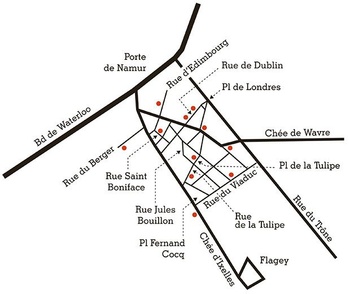
“We were looking for a formula outside the gallery circuit. More roots, you know. Our initiative had to be rooted firmly in the neighbourhood,” Marcq explains. “I think it is an interesting concept to present exhibitions in places that people prefer to avoid, like the gallery in Matongé, for example. We are investing in the area. Last year we used some places that needed a lot of work to turn them into exhibition spaces. But since we have a major photographer in our midst this year, we had to find a space that was a bit “cleaner”. [Hilarity]
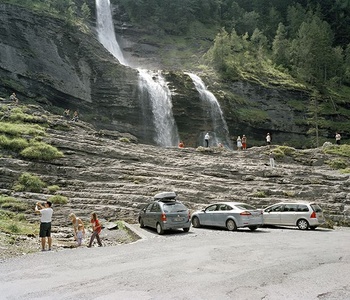
(© Bertrand Cavalier)
“We have no commercial goals,” Dal Mas adds. “There is no theme in our selection. I think we can safely say that ours is the only initiative in Brussels with an open call to all photographers. We aim to diversify; to show photography in all its forms. From the outset we wanted to present more than just exhibitions: we have a debate, a party, the shop specialised in photography books Tipi has a branch in the festival’s hot spot, La Quincaillerie, and there are other activities besides.”
“We have no commercial goals,” Dal Mas adds. “There is no theme in our selection. I think we can safely say that ours is the only initiative in Brussels with an open call to all photographers. We aim to diversify; to show photography in all its forms. From the outset we wanted to present more than just exhibitions: we have a debate, a party, the shop specialised in photography books Tipi has a branch in the festival’s hot spot, La Quincaillerie, and there are other activities besides.”
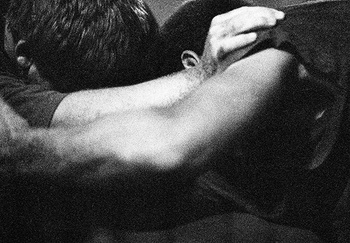
(© Charlotte Walker)
Hugues de Wurstemberger: “The festival reminds me of the exhibitions we used to organise in the punk period. We would transform a butcher’s shop or some other offbeat location into an exhibition space. Quite a few of my students still present their work like that, and they are doing quite well. We have moved further from the official circuit. That’s how I experienced the first edition of WALK. Other festivals, like BIP in Liège, are very much tied to the museum structure. They are big institutions. WALK is a festival in the margins. The idea of passers-by is of central importance here. You always have to make concessions with big institutions. We offer enormous freedom, and that appeals to a lot of exhibitors; it’s stimulating. There are exhibitions in spaces that are not intended for that purpose. Discovering those little shops and hidden places is great. It’s always good to invest in wastelands. It’s a short and snappy festival, four days and then bang, it’s over.”
Hugues de Wurstemberger: “The festival reminds me of the exhibitions we used to organise in the punk period. We would transform a butcher’s shop or some other offbeat location into an exhibition space. Quite a few of my students still present their work like that, and they are doing quite well. We have moved further from the official circuit. That’s how I experienced the first edition of WALK. Other festivals, like BIP in Liège, are very much tied to the museum structure. They are big institutions. WALK is a festival in the margins. The idea of passers-by is of central importance here. You always have to make concessions with big institutions. We offer enormous freedom, and that appeals to a lot of exhibitors; it’s stimulating. There are exhibitions in spaces that are not intended for that purpose. Discovering those little shops and hidden places is great. It’s always good to invest in wastelands. It’s a short and snappy festival, four days and then bang, it’s over.”
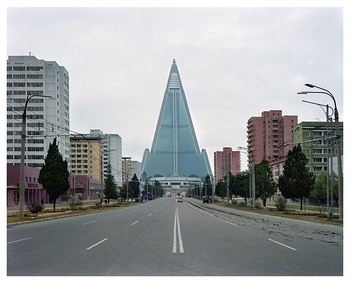
(© Maxime Delvaux)
De Wurstemberger’s admiration for the young festival initiators is palpable. “Young people who want to exhibit their work don’t easily get in via the official channels like the press or galleries. They play with social media and the internet, but when a carte blanche festival pops up, it excites them. I love that energy.”
De Wurstemberger’s admiration for the young festival initiators is palpable. “Young people who want to exhibit their work don’t easily get in via the official channels like the press or galleries. They play with social media and the internet, but when a carte blanche festival pops up, it excites them. I love that energy.”
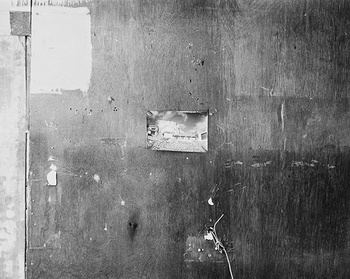
(© Sébastien Marcq)
When I ask about their ambitions for next year, Dal Mas reacts very tentatively: “It’s a little difficult to talk about ambitions for next year when this edition isn’t even over. But expanding the festival for no reason would be pointless. Sébastien already has lots of ideas, though.” “That is true,” Marcq answers while sipping his second espresso, “I have an enormous number of ideas, and that can get really tiring.” [Hilarity all around] So things are looking good for next year after all.
When I ask about their ambitions for next year, Dal Mas reacts very tentatively: “It’s a little difficult to talk about ambitions for next year when this edition isn’t even over. But expanding the festival for no reason would be pointless. Sébastien already has lots of ideas, though.” “That is true,” Marcq answers while sipping his second espresso, “I have an enormous number of ideas, and that can get really tiring.” [Hilarity all around] So things are looking good for next year after all.
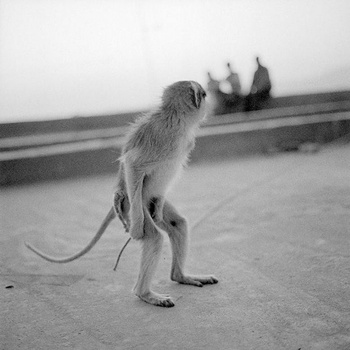
HUGUES DE WURSTEMBERGER
Hugues de Wurstemberger is the guest of honour at WALK#2. Swiss-born, he is a discrete photographer whose visual language persistently avoids sensation. He has been a member of the VU’ photo agency since its foundation in 1986. He became well-known thanks to his reports on refugees in El Salvador and nomads in the Sahara. De Wurstemberger remains faithful to the square format. Every scene is captured in a fixed frame, with great attention to light and detail. Why make reports in square format? “I initially chose the square because I took my first photos with a Rolleiflex. If it works in the square, it’s a powerful image. The square also allowed me to make different press images. Going to Syria, for example, doesn’t interest me at all, but I very much enjoy reflecting on topical subjects that are no longer topical.” Aesthetics are important to the photographer, and that is also clear from the two photographers he has programmed. The Frenchman Quentin Derouet makes grainy, almost abstract images in a small community in the French Aude region. The Swiss Charlotte Walker uses the same rough grain for her series Baerentanz: contrast-rich close-ups of wrestling men whose sweat you can almost smell.
WALK#2 • 16 > 20/10, gratis/gratuit/free, Verschillende locaties/Divers lieux/Various venues, hot spot: La Quincaillerie, Viaductstraat 66 rue du Viaduc, Elsene/Ixelles, www.walk2.be
Hugues de Wurstemberger is the guest of honour at WALK#2. Swiss-born, he is a discrete photographer whose visual language persistently avoids sensation. He has been a member of the VU’ photo agency since its foundation in 1986. He became well-known thanks to his reports on refugees in El Salvador and nomads in the Sahara. De Wurstemberger remains faithful to the square format. Every scene is captured in a fixed frame, with great attention to light and detail. Why make reports in square format? “I initially chose the square because I took my first photos with a Rolleiflex. If it works in the square, it’s a powerful image. The square also allowed me to make different press images. Going to Syria, for example, doesn’t interest me at all, but I very much enjoy reflecting on topical subjects that are no longer topical.” Aesthetics are important to the photographer, and that is also clear from the two photographers he has programmed. The Frenchman Quentin Derouet makes grainy, almost abstract images in a small community in the French Aude region. The Swiss Charlotte Walker uses the same rough grain for her series Baerentanz: contrast-rich close-ups of wrestling men whose sweat you can almost smell.
WALK#2 • 16 > 20/10, gratis/gratuit/free, Verschillende locaties/Divers lieux/Various venues, hot spot: La Quincaillerie, Viaductstraat 66 rue du Viaduc, Elsene/Ixelles, www.walk2.be
Read more about: Expo , Events & Festivals
Fijn dat je wil reageren. Wie reageert, gaat akkoord met onze huisregels. Hoe reageren via Disqus? Een woordje uitleg.